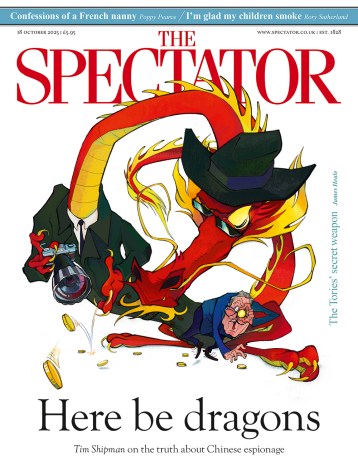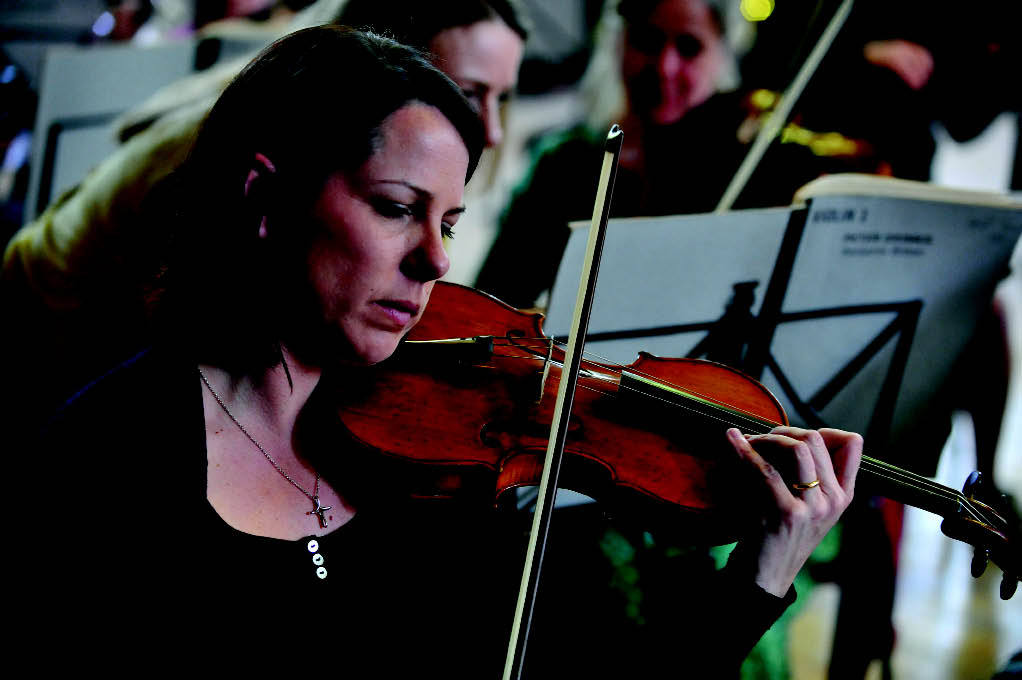Henrietta Bredin talks to the leader of ENO’s orchestra about working ‘in the trenches’
‘Working in the trenches’ is how some people describe their lives in the orchestra pit, playing for opera performances. The traditional opera house has a horseshoe-shaped auditorium and the musicians are accommodated below stage level so that, ideally, the sound they make floats up and out into the theatre without overwhelming the singers. At Bayreuth, in the Festspielhaus that Wagner had built specifically for the performance of his own operas, the musicians are completely invisible, in a pit that is not just recessed well beneath the stage but is also covered by a hood.
Janice Graham is the leader of English National Opera’s orchestra and, coming from a background of playing in symphony orchestras, was surprised to discover how much she enjoys playing in the pit. ‘It took some getting used to,’ she says, ‘but I really like it. My musical life is incredibly varied, which is the case for most musicians; so sometimes I can be playing as a soloist in a concerto, at other times I’m on stage as part of a symphony orchestra and recently I had to play a tango on live television for Strictly Come Dancing, which was absolutely terrifying. As the leader of an opera orchestra, I’m part of the team but I often have the opportunity to play wonderful solos. There’s an amazing bit in Turandot, for example, where you’re doubling the vocal line and so you have your own character in that, emerging from the orchestral texture before blending back in again.’
What exactly does being the leader of an orchestra involve? Janice laughs. ‘I’m often asked that! It’s something that I aspired to from an early age. I went into the National Children’s Orchestra when I was 11 and I had no idea about my level of playing countrywide, but I went straight in as assistant leader and, as I liked the added responsibilities that come with it, I moved up to be leader. For me it’s a great balance — obviously you have to be a pretty good fiddle player and some people who trained at my level would only have wanted to be soloists, but I love coming in and out with occasional solos rather than being the dominant player, and I actually like the day-to-day orchestral tasks you’re also called on to do: running auditions to appoint new instrumentalists, ringing round to find the right replacement if someone’s off sick. And in rehearsal there’s an etiquette to keeping things on track. With upwards of 80 people, you can’t just have any of them at any point choosing to ask a question or make an observation. Each section of players has a principal, and things get passed on to those principals who then communicate with me, quite often by sign language or a quick glance. If I can answer then I do but sometimes I’ll have to ask the conductor, at an appropriate moment. So many things are going on at the same time when you’re rehearsing that if you stopped and spent two minutes on every single thing that needed attention you’d never get through.’
So high levels of tact and diplomacy are clearly called for as well as musical skill. And, in the case of the ENO orchestra, under the guidance of its music director Edward Gardner, elements of artistic collaboration and, when he is not conducting, acting as a sort of guardian of the flame. ‘There is definitely a sense, in any orchestra, of its own style, the essential DNA that makes it sound the way it does. Ed’s being made music director-designate and my appointment as leader were very close in time but we’d never actually worked together at that point. We met and talked and discovered that we had a very similar kind of vision and now we have an extremely close collaboration. If he’s not around for a while we always keep in touch so that I can fill him in on how things are going. When other conductors come in to work with us you need to know that there’s a sense of direction and continuity, and, in those circumstances, to a certain extent, I represent both Ed and the orchestra.’
When we spoke, orchestral rehearsals were just about to begin for a new production of Janácek’s Katya Kabanova, conducted by Mark Wigglesworth. ‘That’s an interesting dynamic for me,’ says Janice. ‘He was music director when I was leading the BBC National Orchestra of Wales when he was probably about the same age Ed is now [36], and I was in my late twenties. And now I’m in the situation at ENO where I’m the one who’s older than the music director — not much, but a bit. It used to drive me nuts when people talked about how essential it was to gain experience but of course they were probably right. Recently, playing for Duke Bluebeard’s Castle and The Rite of Spring has been incredibly rewarding and I think I was able to bring quite a lot to both of them because I’ve played them on the concert platform.’
It was noticeable, when sitting in the audience for Bluebeard and Rite of Spring, that the orchestra received wildly enthusiastic and specifically targeted applause for their playing. ‘That was very gratifying. And I have to say, after playing Rite of Spring so many times symphonically, I was really worried about how it was going to work in the opera house. But it sounded fantastic, and of course it was designed to be played from the pit; Stravinsky wrote it that way. It was the same when we played Peter Grimes. The four sea interludes had so much colour and so much meaning. I’ve never heard them sound that good.’
The conductor of an opera is placed higher than any of the players and is the absolutely crucial link between pit and stage. An added dimension is provided by the drama that is unfolding above the players’ heads, and maintaining a vibrant connection between the two is essential. The conductor has to keep an eye on the whole picture and also to listen fantastically acutely. ‘There are always members of the music staff in the auditorium for rehearsals, getting the audience’s perspective and making sure the balance is right. The Coliseum has some unexpected dead points and a lot of people consider that you get the best possible sound sitting in the balcony. I can see quite a lot of the stage from where I sit — although I never see anyone’s feet! — but for players who are sitting further back it’s essential to be part of the chain of communication between the singers on stage and the conductor. Often they can hear strange bumps and thuds from above but have no idea what’s actually going on.
‘And as players we have to keep practising. Tennis players have coaches; they don’t just play games, they focus on their technique to maintain their standard. Musicians are like sportsmen, or dancers; they’re an interesting breed and you try never to let yourself down. I can’t separate music from the other things I do. It’s been part of my life for so long I can’t remember ever being without it.’






Comments